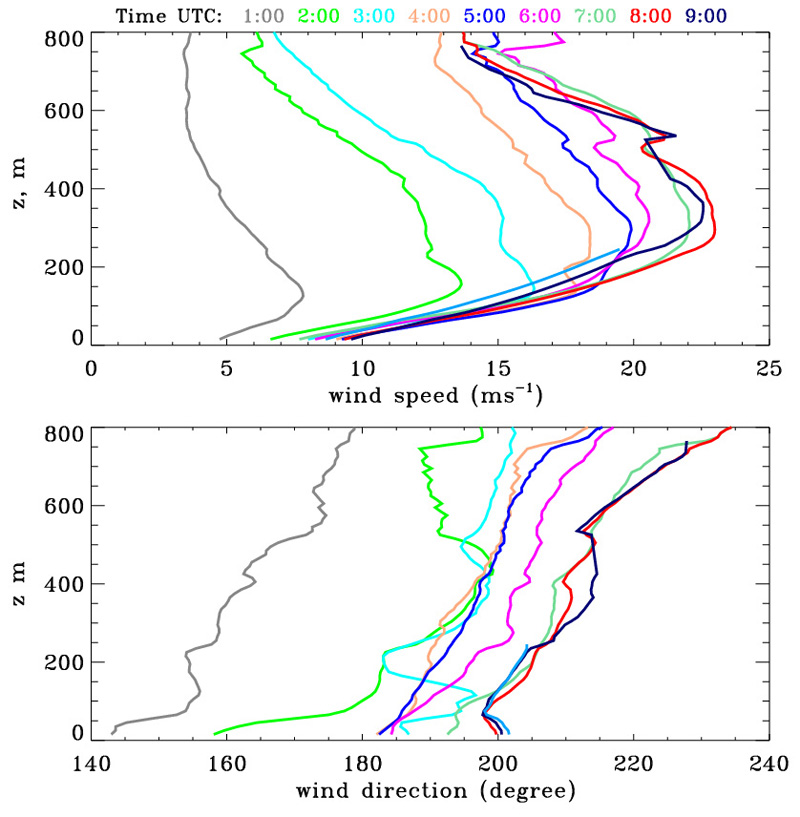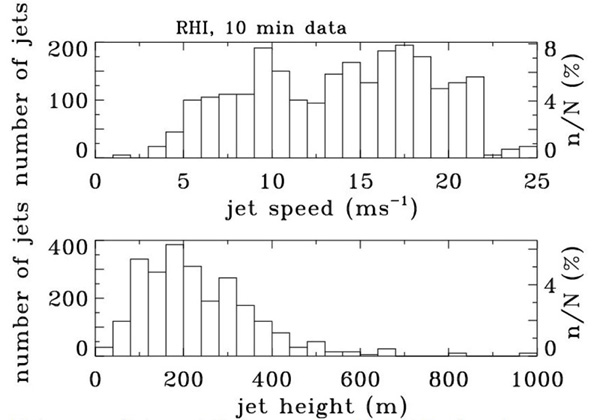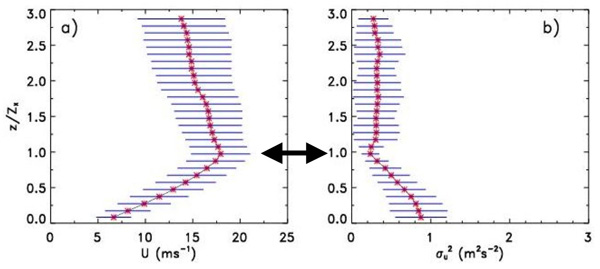LLLJP Low-Level Jet

Hourly profiles of mean wind speeds (top) and wind directions (bottom) computed from conical scans on 09/15. Wind profiles show clear LLJ structure.

Time-series of UX (red) and ZX (blue) determined from HRDL vertical-slice scans for several nights.
Low-level Jet (LLJ) is major warm-season wind resource in the U.S. Great Plains and it plays an important role in generating shear and turbulence within the atmospheric layer occupied by wind turbine rotors. Often the intense wind shears generate coherent motions that can induce large, damaging wind-loading events, when ingested by a turbine rotor, as well as forcing the turbines to shut down from excessive vibration.
LLJ properties
- Frequency of occurrence
- LLJ wind-speed maximum (UX)
- height of the wind-speed maximum (ZX)
- direction of the wind-speed maximum (DX)
- Wind shear between surface and the wind-speed maximum
Histograms of jet speed UX (top panel) and height ZX of maximum speed (bottom panel) for 10-min averages are displayed below. Percentages of occurrences in each bin are shown along left vertical axis, and total number of occurrences in each bin is indicated along the right vertical axis.

During the Lamar experiment LLJ was present in 86% of 10-min wind speed profiles obtained from both conical and vertical-slice, and most of these jets were observed below 500 m.
LLJ and turbulence
There is a relation between HRDL measured velocity variance and LLJ wind speed maxima. LLJ maximum serves as an upper bound to the layer of strong surface-based turbulence.
Profiles of (a) horizontal velocity and (b) variance composited for several nights show the strongest turbulence below the LLJ maximum.

A time-height cross-section of the horizontal velocity variance for the night of September 15 is shown in color, and the heights of the LLJ wind maxima are indicated by asterisks.

